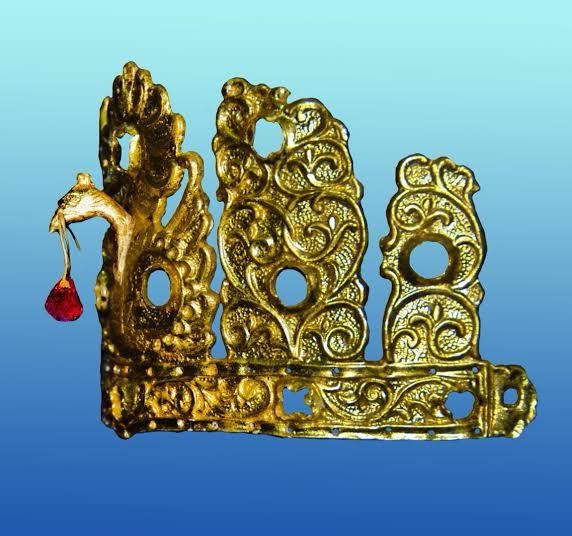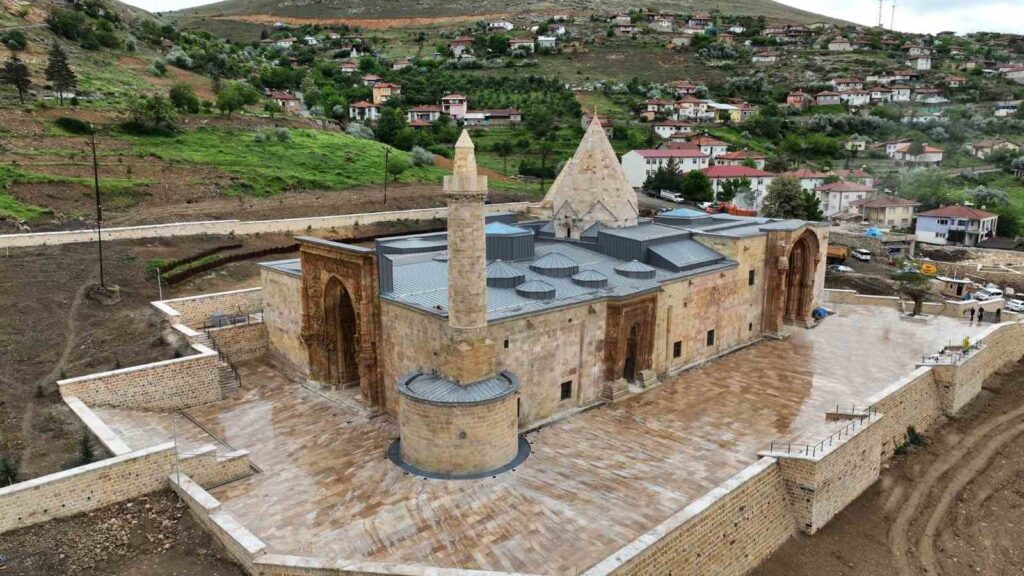The secret of the Tree of Life in the Twin Minaret Madrasa
Prof. Dr. Hakan Hadi Kadıoğlu, who continues his work contributing to the history and culture of Erzurum and has written compilations and educational articles on various subjects, researched the ‘Turkish Universe Perception Embroidery on the Crown Door’ of the Twin Minaret Madrasa.

Prof. Dr. Hakan Hadi Kadıoğlu, who continues his studies contributing to the history and culture of Erzurum and pens compiler and instructional writings on various subjects, researched the ‘Turkic Universe Perception Embroidery’ on the ‘Crown Door’ of the Çifte Minareli Medrese. Prof. Dr. Hakan Kadıoğlu pointed out that on the portal of the Çifte Minareli Medrese, under an arch within a frame, there is a double-headed eagle standing on the Tree of Life, as if it is shouldering it. He stated, ‘The Tree of Life rises from the ground, passing through a crescent-shaped rosette, ascending to the sky. Two dragons with wolf heads and scaly bodies wrap around the Tree of Life. The branches of the Tree of Life are depicted in the form of palm trees, with pomegranate-shaped fruits and small bird figures among the branches. It is also thought that the double-headed eagle or eagle represents the Umay-Huma bird. The branches of the Tree of Life correspond to the layers of the sky. Between the branches, there are offspring of Huma and sacred fruits. The double-headed eagle defines large and predatory birds among the Turks.’ He said.
The Tree of Life has always been a subject of focus, researched extensively, and encountered in various forms in Eastern and Western civilizations, according to Kadıoğlu. He continued, ‘Eliade writes about the Tree of Life as follows; ‘The most common mythical world center we encounter from prehistory is the cosmic mountain and world tree. These images are encountered among both the Altai peoples and everywhere in Asia. Altai Tatars believe that Bay Ülgen sits on the middle of the sky, on the Golden Mountain (Altin Dağ~Altay). Abakan Tatars call this ‘Iron Mountain.” According to the ancient Turks who believed that the tree called Demir Kazık extends from the ground to the Pole Star, there are seven layers of sky, with paradise placed here, and the highest sky being the ninth sky.’
‘The Huma Bird is almost synonymous with Erzurum’ Professor Dr. Hakan Kadıoğlu emphasized that the Tree of Life, connecting the sky and the earth, mediates during shamanic rituals for the shaman to ascend to the sky and planets. He stated that it is believed that the birds among the branches of the Tree of Life are unborn shaman spirits. According to this latter idea, the double-headed eagle at the top of the tree probably symbolizes Ayıg Toyon. Another belief is that these birds facilitate the passage of souls to the afterlife after death. In shamanic rituals, the shaman must pass through the gate with the blackbird using the branches of the Tree of Life. The same nature motifs seen in the portal of the Yakutiye Medrese, lions and leopard figures at the bottom row are guardians protecting the shaman ascending to the sky or ordinary people from evil spirits.’ Umay is the mother goddess and owner of the Tree of Life. She is the protector of childbirth and unborn children. In the belief of Gök Tengri, she is the most important entity after God.’
‘In-depth explanation of the motif is necessary’ Kadıoğlu, who states that the ‘shemse’ rosettes found on the door of the Yakutiye Medrese, not on the portal of the Çifte Minareli Medrese, represent the moon, sun, and other planets, said, ‘These figures are related to sun and moon worship. Today, they are present in our flag as the moon and star. The dragon figure in the motif on the portal of the Çifte Minareli Medrese has cosmogonic significance. It surrounds the universe. It is also called snake, shadow snake, büke, or universe. In Turkish mythology, there are earth and sky universes. The earth universe is described as having a body like a pipe, while the sky universe is depicted as scaly and winged. It also carries meanings of health, long life, and sovereignty. It can be seen that over time, the universes have changed shape to take on the form of a wolf’s head. This shift in form is seen as a transition. It is used in the cosmic symbol of reaching the sky dome and God. This form can be found in works from the Göktürk, Uyghur, and Seljuk periods. We desire that this work, which constitutes the material existence of Turkish thought reaching today, be published in a way that reflects the meanings mentioned above. Perhaps a qualified painting would have made it possible to explain this motif on the door of the Çifte Minareli Medrese in depth.’






